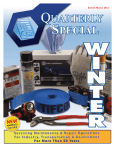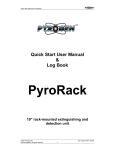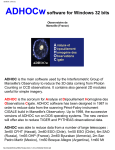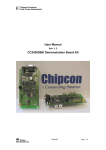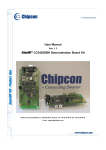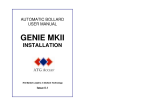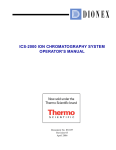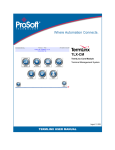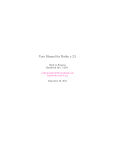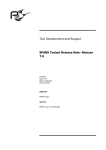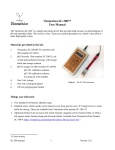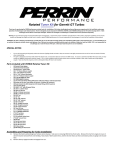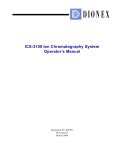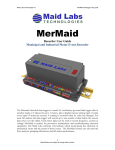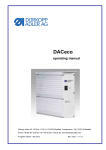Download Boat Manual - Engineering Design Consultancy and Technical
Transcript
Fire Mermaid X1 This manual contains essential system and safety information and should be stored in a safe place accessible to all boat users Installation and User manual for FIRE MERMAID X1 Fire Extinguishing System Page 1 of 35 Fire Mermaid X1 Contents 1. User Instructions ..................................................................................................... 4 Fire ..................................................................................................................... 4 Alarm.................................................................................................................. 4 Fault ................................................................................................................... 4 Alarms ................................................................................................................ 5 Fire Alarm........................................................................................................... 5 Fire Extinguishing............................................................................................... 5 Fault Light........................................................................................................... 5 Functions Description......................................................................................... 6 Fire ..................................................................................................................... 6 Fault ................................................................................................................... 6 After Discharge................................................................................................... 6 2. Main system components ....................................................................................... 7 General............................................................................................................... 7 Pyrogen Canister................................................................................................ 7 Contents ............................................................................................................. 7 Fire Extinguishing............................................................................................... 7 The Control Panel .............................................................................................. 8 Monitoring........................................................................................................... 8 Start.................................................................................................................... 8 3. Service.................................................................................................................... 9 General............................................................................................................... 9 The Regular Visual Inspection............................................................................ 9 10 Year Service.................................................................................................. 9 After Discharge................................................................................................... 9 Recommended Procedure for Replacement .................................................... 10 Disposal............................................................................................................ 10 4. Installation............................................................................................................. 11 General............................................................................................................. 11 Installation Procedure....................................................................................... 12 Material............................................................................................................. 12 Tools................................................................................................................. 12 Order of Connection ......................................................................................... 12 Control Panel Mounting .................................................................................... 13 Pyrogen Canister Mounting .............................................................................. 13 The Control Panel ............................................................................................ 14 General............................................................................................................. 14 Connections ..................................................................................................... 15 Settings (Programming).................................................................................... 15 Wires ................................................................................................................ 15 Auxiliaries ......................................................................................................... 16 Sensor Cable.................................................................................................... 16 The Pyrogen Canister....................................................................................... 17 Page 2 of 35 Fire Mermaid X1 5. Trouble shooting ................................................................................................... 18 No Light in the Control Panel............................................................................ 18 Fault is Lit......................................................................................................... 19 Fire is Lit........................................................................................................... 20 External Alarms ................................................................................................ 21 General............................................................................................................. 21 6. Accessories and Spare Parts................................................................................ 22 Kits ................................................................................................................... 22 Included in the Kit............................................................................................. 22 Accessories ...................................................................................................... 22 Spare Parts ...................................................................................................... 23 7. Pyrogen Safety Data............................................................................................. 25 Limitations ........................................................................................................ 25 Height Limitation............................................................................................... 25 Safe Distance ................................................................................................... 25 Visibility ............................................................................................................ 25 Oxygen Levels.................................................................................................. 25 Toxicity ............................................................................................................. 26 Post Fire Exposure........................................................................................... 26 Thermal Hazard................................................................................................ 26 Hot Work .......................................................................................................... 26 Re-entry............................................................................................................ 27 Clean-up........................................................................................................... 27 Dangerous Goods Classification ...................................................................... 27 CoSHH Statement............................................................................................ 27 Noise ................................................................................................................ 27 8. Technical Specification ......................................................................................... 28 9. Fire Procedure ...................................................................................................... 30 10. Commissioning Check List.................................................................................. 31 11. Service Log ......................................................................................................... 32 12. Declaration of Conformity.................................................................................... 33 13. Installation Templates ......................................................................................... 34 Control Panel.................................................................................................... 34 Pyrogen Canister Mounting .............................................................................. 35 Observe Safety Information in Section 7 (page 25) Page 3 of 35 Fire Mermaid X1 1. User Instructions Fire When a fire in the engine room is discovered: 1. Check that the engine room has been evacuated. 2. Close the engine room and shut down ventilation. 3. Shut-off the engine. 4. Press both discharge buttons simultaneously for 5 seconds. (Must be done immediately after engine shut-off) 5. Disconnect all power supplies. (electric/gas/fuel) 6. Perform a role call. 7. Check that everybody is present and unhurt. 8. Think safety. (life jackets, anchoring, flares, alert coast guard etc.) 9. After 5 minutes verify that the fire is extinguished. (Only open the hatches slightly, caution must be used not to become exposed to the fire or its bi-products) 10. Only restart engine once the cause of the fire has been repaired/mended. Alarm When an alarm appears on the control panel: 1. Check if it is a fire or a fault alarm. 2. If it is a fire see above “Fire”. 3. If it is a fault see below “Fault”. Fault When a fault occurs: 1. Disconnect all power to the control panel. 2. Disconnect the Pyrogen canister. 3. Find the fault and repair it. 4. Reconnect the power supply. 5. Reconnect the Pyrogen canister. 6. Verify that the fault alarm does not reappear. Page 4 of 35 Fire Mermaid X1 Alarms Fire = Flashing light and pulse sound (and beacon). Discharge = Continuous light and continuous sound (and beacon). Fault = Continuous light and pulse sound (and beacon). Fire light flashes, horn is pulsating (beacon flashes) Fire Alarm When either discharge buttons have been activated, or the sensor cable has melted, (burned) (only when the control panel is in automatic, see J1 page 15) the fire extinguisher will discharge after approx. 5 seconds warning. In the event of an automatic alarm it should be verified immediately, to check if it is a fire or what has caused the alarm. The sounder (and beacon) can be turned off by pressing the button “Reset Sound”; the alarm will still be active and discharge the fire extinguisher approx. 5 seconds after the alarm started. Fire flashes, fault and horn is continuous (beacon is continuous) Fire Extinguishing When the fire extinguisher has been discharged, the horn and beacon can be turned off by pressing the “Reset Sound” button. “Fire” and “Fault” indicators will still be on at the control panel until the sensor cable and the fire extinguishers are replaced. If the fire extinguishing was activated by the sensor cable, the “Fire” light on the control panel will remain lit until the sensor cable has been replaced/disconnected. If the sensor cable is disconnected, the “Fault” light will be indicated on the control panel until the sensor cable is replaced/reconnected. Fault lights, horn pulses (beacon flashes) Fault Light If “Fault” is lit and no other indications are lit, a fault has occurred on the system, see the next page. Page 5 of 35 Fire Mermaid X1 Functions Description Fire When the sensor cable is shorted (this happens at 105°C) the control panel will indicate “Fire” (see previous page). If the two discharge buttons “Discharge” on the front of the control panel are activated simultaneously a fire will also be indicated. After 5 seconds of warning the fire extinguisher is activated. The relay Fault/Fire (port 10+11) will operate whether or not jumper J2 is installed (see page 15). During a fire indication the light and sounder are pulsating/flashing. When the fire extinguisher is activated, the beacon and sound will shift to continuous. When the fire extinguisher is activated a “Fault” indication will appear. (see below) If the sounder is reset manually (by pushing the button “Reset Sound”) the sounder and beacon will be turned off. Fault When a fault occurs on the system the control panel will indicate “Fault”. (see previous page) The relay Fault/Fire (port 10+11) will change if jumper J2 is installed. If jumper J2 is not installed the relay will not operate (if the relay is used to control ventilation in the engine room, it is not desirable to have the ventilation stopped due to a fault, and it should only be stopped in the event of a fire). After Discharge When the system has discharged it will not function until it has been re-installed. The Pyrogen unit must be replaced. See section 3 (page 9) “Service” and “After Discharge” Page 6 of 35 Fire Mermaid X1 2. Main system components General Fire Mermaid X1 is designed to control fire extinguishing systems in boats. The extinguishing system is Pyrogen. Pyrogen canisters are activated directly by an electrical impulse. Pyrogen Canister Contents The aerosol generating chemical is a thermoplastic mixture consisting of an oxidiser, a combustible binder and additives. The oxidiser is solid potassium nitrate (KNO3), the binder is solid plasticised nitro-cellulose (CnHmNpOq) and other ingredients for stabilisation. Combustion products of the aerosol-generating chemical half consist of potassium carbonate (KHCO3, K2CO3), carbon dioxide (CO2), nitrogen (N2) and water (H2O) and represent the actual extinguishing agent, completely environmental friendly. Fire Extinguishing Pyrogen is mainly potassium carbonate formed in the gas phase. It condenses to a liquid and then a solid form producing a large number of micron sized particles. Being so small, the particles produce a large surface area increasing the efficiency. The micron sized aerosol particles exhibit a gas like 3-dimensional quality that allow the agent to rapidly distribute throughout the enclosure and reach the most concealed and shielded location. The typical design factor (when dimensions of room/MAG are kept to within the limits stated in this manual) is 100g/m3. Page 7 of 35 Fire Mermaid X1 The Control Panel The Fire Mermaid X1 is a compact control panel which can be fitted to any boat. The Fire Mermaid X1 is easily installed and offers a high class finish to the boats instrumentation. The panel is water proof when installed due to the high end membrane switches used in the all sealed front panel. Monitoring The detector loop is continuously monitored when the control panel is on. If the cable or detector is disconnected, a “Fault” indication will appear. When the control panel is turned off the detector loop remains active. A fire will cause the control panel to come on and discharge the fire extinguisher. (as long as the battery is connected). The discharge loop is monitored, if the connection to the fire extinguisher is disconnected a “Fault” will also be indicated. Start When the ignition is switched to “On” the control panel will perform a start-up procedure. When the ignition has been on for approx. 1½ minutes the control light “Ready” will be lit green on the control panel (it is not possible to discharge the fire extinguisher during the start-up procedure). When the boat ignition is switched off the system can not be activated manually. The detector port is still active. If the detector port is shorted (the sensor cable shorts at 105°C) the control panel will perform an auto-start and activate the fire extinguisher after approx. 15 seconds. If the batteries are completely disconnected the control panel will not be able to perform the activation. The sole purpose of having the control panel on standby is to save energy. Page 8 of 35 Fire Mermaid X1 3. Service General Fire Mermaid X1 is a maintenance free system as it is self monitoring. The condition of wire connections, plugs and auxiliary equipment should be inspected visually on a regular basis in order to prevent damage and faults from occurring. The Regular Visual Inspection • All wires are secured. • No wires have poor insulation. • All connections are clean and sealed. • No moisture is present in connections and there is no corrosion. • The Pyrogen canister is less than 10 years old. • The Pyrogen canister is free from dents/markings or any damage. 10 Year Service • Replace the Pyrogen canister. For proper disposal of undischarged Pyrogen canisters contact: Pyroshield Ltd. Unit 11, Westbrook Trading Estate, Trafford Park, Manchester, UK. M17 1AY. Tel: Fax: e-mail: + 44 (0) 161 877 0077 + 44 (0) 161 877 0078 [email protected] After Discharge The Pyrogen canister must be replaced after discharge. If the fire extinguisher was activated by the sensor wire then that too must also be replaced. (see the section Pyrogen canister and Sensor cable in the chapter “Installation”). Page 9 of 35 Fire Mermaid X1 Recommended Procedure for Replacement 1. Disconnect both power supplies to the control panel. 2. Disconnect the Pyrogen/actuator canister. 3. Remove the Pyrogen canister from its brackets. 4. Remove the old and install a new sensor cable. 5. Install a new Pyrogen canister. (replace brackets if necessary) 6. Connect the wire plug to the Pyrogen canister. 7. Connect power to the control panel. 8. Turn the ignition on. 9. Verify that there are no fault indications on the panel. Disposal Following activation, the Pyrogen canister contains no harmful matter and may be disposed of by using conventional household refuse facilities. Alternatively some distributors may offer a financial incentive to return the old unit to them. Page 10 of 35 Fire Mermaid X1 4. Installation Wiring diagram of the FIRE MERMAID X1 system (two Pyrogen canisters are shown) General Before any work is started the motor must be stopped and the battery +ve. terminal must be disconnected. Do not connect the battery terminal before the installation is completed. Prepare the installation very carefully, have all the right tools and materials ready before the installation is started. Warning: The Pyrogen canister may be activated by exposure to flames and Heat. Avoid exposing the Pyrogen canister to elevated temperatures or direct sunlight. Page 11 of 35 Fire Mermaid X1 Installation Procedure The material below must be available for installation. Material 1. Sufficient wire with an area of =1mm2. It is recommended to use fire resistant wire (IEC 331). 2. Available outlet on the fuse box, (minimum 2Amp) a suitable inline fuse may be used. Tools 1. No. 2 plain screwdriver and Pozi 1+2 screwdriver. 2. T20 Torx screwdriver. 3. Drill with 3mm and 10mm drill bit. 4. Electric jigsaw. Order of Connection 1. Turn off the engine and disconnect the battery +ve. terminal. 2. Make the cut out for the control panel. (see page 13) 3. Install the Pyrogen canister and sensor cable. (see pages 16,17) 4. Install the connection box in the vicinity of the engine room. 5. Connect the sensor cable to the connection box. (see page 16) 6. Place/check SW1, J1 and J2 in the desired position. (see page 15) 7. Install wires from the connector box to the control panel. 8. Connect horn and optional beacon. 9. Connect other auxiliary equipment. (ventilation) 10. Connect the wires in the connection box. (see page 15) 11. Connect the wires at the control panel. 12. Connect wires from the ignition switch to the control panel. 13. Connect the control panel to the fuse box. (or inline fuse) (see page 15) 14. Reconnect the battery. 15. Verify that all connections are correctly made; check the light on the control panel with ignition on. 16. Check that no fire is indicated on the control panel. 17. Connect the Pyrogen canister. Page 12 of 35 Fire Mermaid X1 Control Panel Mounting Cut out the template in the back of this manual by cutting along the grey line. (100mm x 130mm). Place the template on the dashboard in the cockpit, in the desired position, (it must be a place which is easily accessible) to which the access will not be limited in the event of a fire in the engine room. The template should be placed so that the diagonal lines, where the holes are to be drilled, are placed downwards. Double sided sticky tape may be use to secure the template during installation. The control panel must be easily accessible in the event of an engine fire • Mark with a sharp pointer the 6 corners in the cut-out. Mark the centre of the 10mm hole and the 4 screw holes. • Drill a 10mm hole in the bottom left corner. • Use a jigsaw to make the cut-out in the dashboard. The cut-out must follow the full black lines on the template. To make sharp corners it may be necessary to cut from both sides. Use the correct jigsaw blade according to the dashboard material. • File off any rough edges, using a suitable file. • Unwrap the control panel and verify that it will fit the cut-out without interfering with the dashboard. Verify that the screw marks line up as well. Pyrogen Canister Mounting An Ideal mounting would be right on the bulkhead high up in the engine space pointing towards the engine. This way the Pyrogen will be distributed evenly over the engine which is the potential fire hazard. Page 13 of 35 Fire Mermaid X1 FIRE MERMAID X1 The Control Panel General The terminals are screw terminals. Wires must have bared and soldered ends before being inserted into the desired terminal; the screw is then tightened to secure the wire. It is recommended that only one wire is connected in each terminal. J is a jumper. A jumper is a plastic cover with metal poles on the inside. (see page 15) It will short the terminals which it is placed in. When the jumper is removed the terminal is no longer shorted. SW1 is a switch which may be placed in to positions by turning it with a screwdriver. (see page 15) Page 14 of 35 Fire Mermaid X1 Connections + Battery: To the battery +ve. terminal (remember fuse) - Battery: To the battery -ve. terminal. + Ignition: To the main or ignition switch (note it must be supplied from the battery +ve. terminal). +, - Sensor: Connection for the sensor cable. + and - sensor is shorted during fire. +, - Extinguish: Power to activate the fire extinguisher (monitoring current when the control panel is on). +, - Spare: Must be shorted. An open circuit will result in a “Fault” indication. 1, 2 Fault/Fire: Relay which may be used for auxiliary alarm or to control engine room ventilation. +, - Sounder: Sounder and beacons are connected here. Settings (Programming) J1: If J1 is fitted the system can only be activated manually. If J1 is not fitted (Factory default) the system may discharge both automatically (sensor cable) and manually (buttons on control panel front). J2: If J2 is fitted (Factory default) the relay Fault/Fire will operate on both fault and fire alarm. If J2 is not fitted the relay Fault/Fire will only activate on Fire alarms. SW1: If SW is active the Fault/Fire terminal is “Normally Closed” and the circuit will break during a Fire/Fault. (for use with engine room ventilation, fuel pump, engine shut down etc.) If SW1 is inactive (Factory default) the Fault/Fire terminal is “Normally Open” and the circuit will close on Fire/Fault. Wires Wires from the control panel and to the sensor cable and MAG canister must be shielded and be of shortest possible length. Wires must have a cross sectional area of at least 0.6mm2, and the maximum acceptable length must not exceed 20m. Page 15 of 35 Fire Mermaid X1 Auxiliaries Sounders and optical lights/beacons must be placed so that they can be observed from the typical control points. It may be necessary to purchase and install extra sounders or lights/beacons to ensure that they can be observed from any point on the boat. Beacon/lights and sounders must be easily observable Sensor Cable The sensor cable is supplied complete with an “end of line resistor” and only needs to be connected at one end to work properly. The cable is placed in the top of the engine room in a way so that a fire will melt the cable. The cable may be secured with cable ties, clips or similar. The cable must be placed freely so that flames can reach the cable from all sides. When locating the sensor cable caution should be observed, so as not to place it directly over hot exhaust manifolds, as the sensor cable will activate at 105°C. Do not shorten the sensor cable When installing the sensor cable it is important not to damage it. Cable ties should not be tightened so hard that the wires inside the cable may be squeezed together. If a pre made sensor cable is not used, the end of line resistor must be soldered on prior to installation. Bare 1cm of the cable and solder the resistor to the bared wire. Apply insulation tape is to each bared wire. After it has been measured that the resistor is soldered correctly and the wires are not shorted, the protective cap is fitted and heat shrinked on with a hot air gun, care must be taken not to damage the sensor cable during this operation. Page 16 of 35 Fire Mermaid X1 The Pyrogen Canister The bracket for the Pyrogen canister must be mounted so that the Pyrogen canister is placed in an effective position. It is important that the outlet of the Pyrogen canister is not pointing directly at a wall, escape route, or in a direction where an unintended discharge may expose danger to man or material, (see page 24) for distances that must be observed. If the Pyrogen canister is of the mono nozzle type (only one protective cover) it should be placed so that it will discharge the Pyrogen over the engine room (the rear side of the canister should be placed toward the engine room wall). If it is the Bi-directional type the Pyrogen canister should be placed in the middle of the room. If more than one Pyrogen canister is to be connected to one control panel they must be connected in parallel. See page 24 for necessary precessions when installing the canister. Page 17 of 35 Fire Mermaid X1 5. Trouble shooting No Light in the Control Panel Check that power to the control panel is connected correctly. Check that the ignition is on and has been on (continuously) for at least 2 minutes. Check that there is +12V. D.C. at the control panel. Check the fuse. Page 18 of 35 Fire Mermaid X1 Fault is Lit Check that “Spare” is shorted. Check that the sensor cable is connected and that the “end of line” resistor (43 KΩ) is correctly installed. Check all connections (note: A build up of dirt and corrosion may cause the system to malfunction). Page 19 of 35 Fire Mermaid X1 Fire is Lit The sensor cable port is shorted. Disconnect the sensor cable connection in the connection box (by the engine room) and press the “Reset Sounder” for 3 seconds. If the fire indication does not disappear, the cable between the control panel and the connection box is damaged. When a faulty wire is found it must be replaced. It is not recommended to mend or repair a faulty wire, the whole wire should be replaced. Page 20 of 35 Fire Mermaid X1 External Alarms General When extra equipment is installed to the system it should be verified that the rating does not exceed the specification of the control panel. If problems occur always check that the equipment is functioning correctly before fault finding on the control panel/system. Connected to “Sounder” or “Light/Beacon” Check that the terminals on the sounder or light/beacon are connected properly and that they are clean. Check that wires are not shorted. Connected to the Fault/Fire terminals Check the position of SW1; if SW1 is active the relay will open upon alarm. (when connected to the ventilation etc.) If SW1 is inactive the relay will close upon alarm (alarm horns etc.). Check the position of J2, if the jumper is fitted the relay will only operate on a fire alarm (e.g. ventilation), a fault alarm will not have any effect on the relay when J2 is fitted. If J2 is not fitted a fault will also cause the relay to operate. Page 21 of 35 Fire Mermaid X1 6. Accessories and Spare Parts Kits Model Engine Room m3 Item No. MAG-2 =1.0 528301 MAG-3 =2.0 528302 2 x MAG-3 =4.0 528304 MAG-5 =5.0 528305 MAG-5+3 =7.0 528307 MAG-4 =10 528310 2 x MAG-4 =20 528310 + 304210 3 x MAG-4 =30 528310 + 2 x 304210 Designation Fire Mermaid 1m3 MAG Fire Mermaid 2m3 MAG Fire Mermaid 4m3 MAG Fire Mermaid 5m3 MAG Fire Mermaid 7m3 MAG Fire Mermaid 10m3 MAG Fire Mermaid 20m3 MAG Fire Mermaid 30m3 MAG Included in the Kit The kit include control panel, sensor cable, connection boxes, sounder, plugs screws etc. as well as the MAG unit(s) for the specified installation. Accessories Designation Dim. (mm) Item No. Sensor Cable c/w End of Line Resistor 4 meter 528012 per meter 101150 Sensor Cable End of Line Resistor Sensor cable Resistor Cap Sign (Engine Room Warning) 515166 505305 105 x 149 528330 Sign (For Windscreen) 149 x 74 528331 5W Red Beacon ø75 x 95 407022 Sounder ø90 x 35 406030 Page 22 of 35 Fire Mermaid X1 Spare Parts Designation Pyrogen Mag-2 Pyrogen Mag-3 Pyrogen Mag-5 Pyrogen Mag-4 Installation Manual Installation Diagram Max Room Volume (m3) Dim. (mm) Weight (kg) Item No. 1 ø75 x 95 0.50 304201 2 ø75 x 145 0.70 304202 5 ø95 x 190 1.83 304205 10 ø95 x 350 4.50 304210 A5 528360 A3 528367 6.3 mm 516100 Distribution Box 70 x 70 x 37 706450 SS Screws UHT 4 x 20 401443 Cable Socket Sounder Fire Proof Cable 501853 2 x 0.75 IEC 331 101142 Page 23 of 35 Fire Mermaid X1 Pictures of different Pyrogen MAG Canisters Vehicle kit shown MAG-3 Pyrogen Canister Control Panel after installation Sounder at top corner and ignition switch in lower right corner. Page 24 of 35 Fire Mermaid X1 7. Pyrogen Safety Data Limitations The Pyrogen extinguishant, being a hot aerosol, has a tendency to rise upward on its release due to buoyancy forces. As such, the aspect of spatial distribution needs to be addressed. Height Limitation MAG-2 1.25m MAG-3 2.50m MAG-4 3.00m MAG-5 3.00m Due to potential hazard of high temperatures below minimum distances should always be observed during installation. Safe Distance MAG-2 400mm MAG-3 1000mm MAG-4 1300mm MAG-5 700mm Visibility Pyrogen is intended to be used in normally unoccupied areas principally due to the high obscuration caused by the aerosol during and after discharge. Oxygen Levels Pyrogen chemically attacks the fire, breaking the flame chain reaction. It does not extinguish fires by oxygen depletion. After discharge, oxygen levels will remain at or about normal. Page 25 of 35 Fire Mermaid X1 Toxicity Inadvertent exposure to Pyrogen aerosol should always be avoided. Toxicological information refers to an inadvertent exposure to the aerosol in the event of accidental discharge in a non-fire situation. The main ingredients of Pyrogen aerosol are solid potassium carbonates, nitrogen gas, carbon dioxide gas and water vapour. At normal extinguishing concentrations these products present little health hazard to personnel. However, small amounts of potentially hazardous by-products of the aerosolgenerating combustion reaction, such as carbon monoxide and nitrogen oxides will be produced. Their toxicological characteristics depend upon the actual concentrations achieved and duration of exposure. Exposure to Pyrogen in a standard system, for up to 5 minutes, is considered to represent a minor risk to personnel and may cause moderate local irritation of the upper respiratory tract and to the eyes. Post Fire Exposure One of the key advantages of Pyrogen over Halon and some of the replacement agents available is that Pyrogen does not produce toxic nor highly corrosive halogen acids when exposed to fire or hot surfaces. Safety requirements dictate, however that unnecessary exposure to post-fire atmospheres should be avoided. Caution Venting of the post-fire atmosphere should be to an open-air area, when possible, to prevent the inadvertent exposure of personnel to any combustion products of the fire and aerosol-generating reaction. Thermal Hazard There is a potential hazard of high temperatures (250°C+) of Pyrogen aerosol at the end-plate nozzle. Outside the safe distance the temperature does not exceed 75°C. Those distances should be observed during installation. Immediately after discharge the generators can be hot, therefore, protective gloves should be worn before handling generators up to 15 minutes after discharge. Hot Work As naked flame or prolonged exposure to temperatures above 400°C (105°C for the sensor cable) may cause activation of the generators, hot work must not be carried out within the vicinity of any generators. If so they shall be removed prior to any hot work being carried out. Page 26 of 35 Fire Mermaid X1 Re-entry Following the use of Pyrogen, personnel should not enter the protected area until is has been thoroughly ventilated. Exposure to the fire by-products and extinguishant mixture should be avoided. Wearing a respirator or other available means of protection may be required should it be necessary to enter the area before it is fully ventilated. Clean-up Following a system discharge the aerosol particles that have settled should be vacuumed, blown, brushed or, if appropriate, washed away. Protective gloves and goggles should be worn. A respirator or mask may be required Large amounts of residue that is allowed to absorb moisture become electrically conductive over a period of time. Dangerous Goods Classification Pyrogen is a Class 4.1 article in accordance with the United Nations Dangerous Goods Classification Code. CoSHH Statement A by-product of Pyrogen aerosol-generating combustion reaction are fine potassium carbonate particles, small enough to be respirated by persons not wearing RPE. There are no known toxicological long term effects of these soluble micron sized particles, and physiological effects of deep lung penetration are usually a concern for insoluble sub-micron particles as they can interfere with pulmonary functions. However, there are clear European guidelines controlling the exposure of persons to fine particles, irrespective of their nature. Further information is available in BS EN 481:1993 and BS EN 451:1992 and in CoSHH supportive documents EH40/98 and EH44 and MDHS 14/2. Noise The sound output and frequency at the time of activation and during discharge is similar to the produced by other extinguishing agents. Consequently, no specific precautions need to be taken. Page 27 of 35 Fire Mermaid X1 8. Technical Specification Power supply Voltage Stand by current Normal current Alarm current (max.) Discharge current (max.) Fuse 8 - 15V. D.C. 0.28mA 50mA 230mA 1A 2A min. Ignition From boat ignition 8 - 15V. D.C. Sensor cable Voltage Normal current (max.) Alarm current (max.) Sensor cable end resistor 5V. D.C. 0.5mA 1.0mA 43kΩ Discharge signal Voltage Current Maximum number of activators / MAG units 8 - 15V. D.C. (as battery) 1A 2 Discharge monitoring Voltage Current 5V. D.C. 0.3mA Sounder connection Voltage Current (max.) 8 - 15V. D.C. (as battery) 200mA Spare Voltage Current (max.) 5V. D.C. 1mA Fault/Fire (non potential relay) Voltage (max.) Current (max.) 60V. D.C. 0.5A Sensor cable end of line resistor Resistance Rating 43kΩ 0.25W Page 28 of 35 Fire Mermaid X1 Dimensions Front H x W x D Cut-out Depth in cut-out Weight 90 x 120 x 5mm 70 x 100mm 40mm 250g. Limited life components Pyrogen 10 years Power supply Voltage Standby current (8 - 15V. D.C.) Standby current (24V. D.C.) Normal current Alarm current (max) Discharge current (max) 8 - 24V. D.C. 0.28mA 2.1mA 50mA 230mA 1A The manufacturer reserves the right to amend specifications and details within this document, without prior notice. Page 29 of 35 Fire Mermaid X1 9. Fire Procedure In the event of a fire follow these directions 1. Check that the engine room has been evacuated. 2. Close the engine room and shut down ventilation. 3. Turn off the engine. 4. Press both discharge buttons simultaneously for 5 seconds. (Must be done immediately after engine shut off) 5. Disconnect all power supplies. (electric/gas/fuel) 6. Check that everybody is present and unhurt. 7. Think safety. (life jackets, anchoring, flares, alert coast guard etc.) 8. After 5 minutes verify that the fire is extinguished. (only open the hatches slightly. Caution must be used not to become exposed to the fire or its bi-products) 9. Only restart engine when the cause for the fire has been repaired/mended. Page 30 of 35 Fire Mermaid X1 10. Commissioning Check List 1. The control panel is in an accessible place 2. Power is properly connected 3. Sensor cable is properly installed 4. Discharge cable is properly installed 5. Warning signs are installed G G G G G Disconnect the discharge cable, Connect the power to the control panel and turn the ignition on 1. The control panel lights up after approx.1½ minutes 2. Fault is lit on in the control panel G G Sensor cable is shorted 1. After approx. 5 seconds the fire alarm starts G The alarm is reset (push “Reset Sounder”) The sensor cable is disconnected 1. G After 1 second fault appears The control panel is activated manually 1. G After approx. 1-2 seconds Alarm starts The Fire extinguisher is reconnected after the test Distributor: tel.: Installation Company: tel.: G Installation date: The system is correctly installed and found free of faults: Place: Date: Signature: Page 31 of 35 Fire Mermaid X1 11. Service Log Any changes, modifications, and repairs to the system or its components are to be noted on these pages. Any records must contain date, name and signature. Date of purchase: Date of installation: Name and address of supplier: J1 is G Fitted G Not fitted J2 is G Fitted G Not fitted SW1 is G Active G Inactive Page 32 of 35 Fire Mermaid X1 12. Declaration of Conformity This appliance confirm to the following standards: Emission: Immunity: EN 50081-1: 1992 EN 50082-1: 1997 Documentation is available at the company’s address. Appliance: Category: Type: Type No.: Description: Manufacture: Alarm unit Control-panel Fire Mermaid X1 Automatic fire detection and extinguishing. Fire Eater A/S Page 33 of 35 Fire Mermaid X1 13. Installation Templates Control Panel Page 34 of 35 Fire Mermaid X1 Pyrogen Canister Mounting Page 35 of 35




































